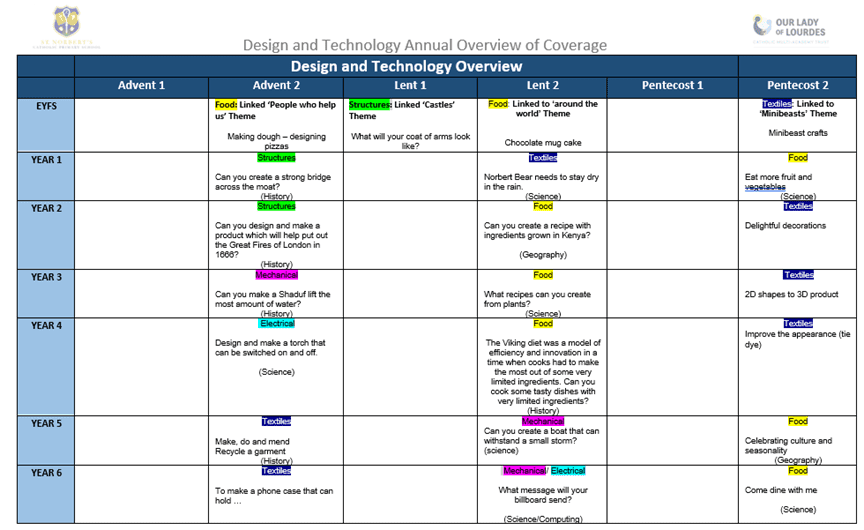Intent
At St. Norbert’s lessons are planned sequentially across year groups to enable coherent and logical progression of key concepts with particular attention to what has come previously and what will come next. Our creative curriculum aims to inspire children through a broad range of practical experiences to create innovative designs which solve real and relevant problems within a variety of different contexts. This iterative process encourages children to identify real and relevant problems, critically evaluate existing products and then take risks and innovate when designing and creating solutions to the problems. As part of the iterative process, time is built in to reflect, evaluate and improve on prototypes using design criteria throughout to support this process. Opportunities are provided for children to evaluate key events and individuals who have helped shape the world, showing the real impact of design and technology on the wider environment and helping to inspire children to become the next generation of innovators.
Implementation
Design and Technology skills are built into lessons, following an iterative process. However, this is not to say that this structure should be followed rigidly: it allows for the revision of ideas to become part of good practice and ultimately helps to build a depth to children’s understanding. Through revisiting and consolidating skills, children build on prior knowledge alongside introducing new skills, knowledge and challenge. Specific lessons offer structure and narrative. The revision and introduction of key vocabulary is built into lessons. Children will be taught to use this key vocabulary when using materials and resources. Teachers will have accurate design and technology subject knowledge and feel confident delivering this to the children.
Through lessons, we intend to inspire pupils to develop a love of Design and Technology and see how it has helped shaped the ever-evolving technological world they live in.
Impact
Teachers will be able to teach key skills. Children will be able to evaluate throughout the process. Design and technology technical vocabulary will be displayed, spoken and used by all learners. We want to ensure that Design and Technology is loved by pupils across school, therefore encouraging them to want to continue building on this wealth of skills and understanding, now and in the future. Impact can also be measured through key questioning skills built into lessons, child-led assessment such as pupil interviews and summative assessments aimed at targeting next steps in learning.







